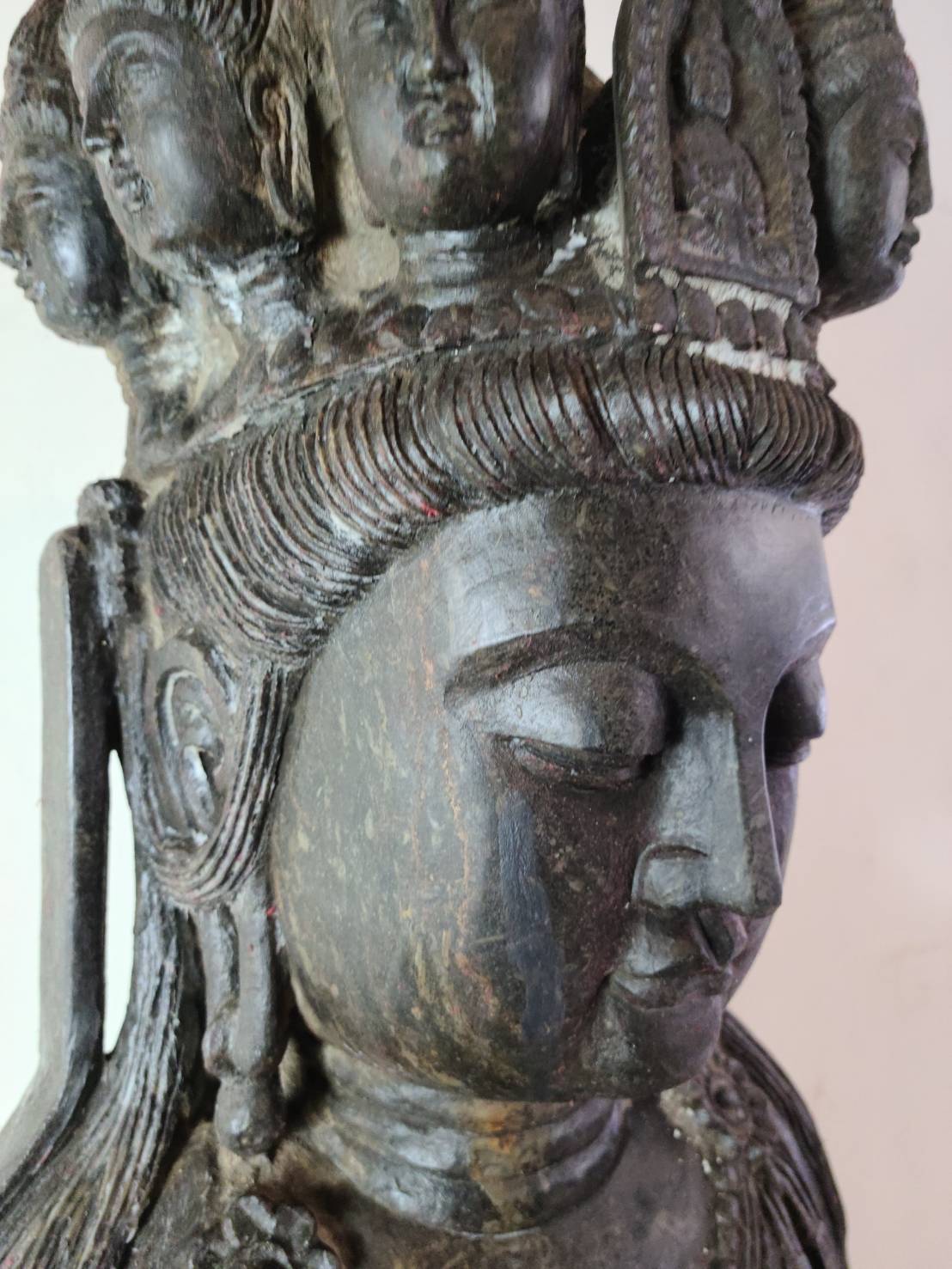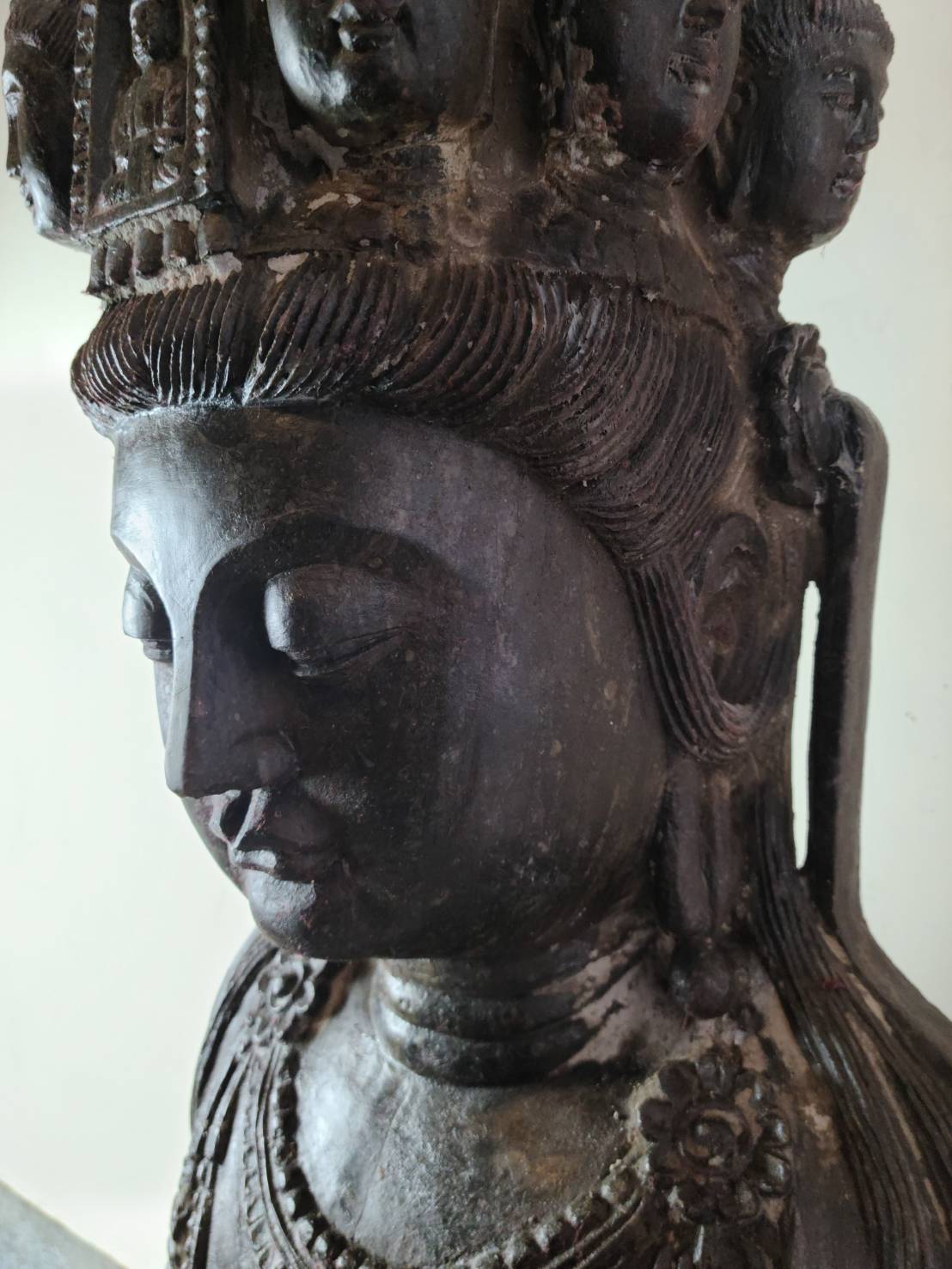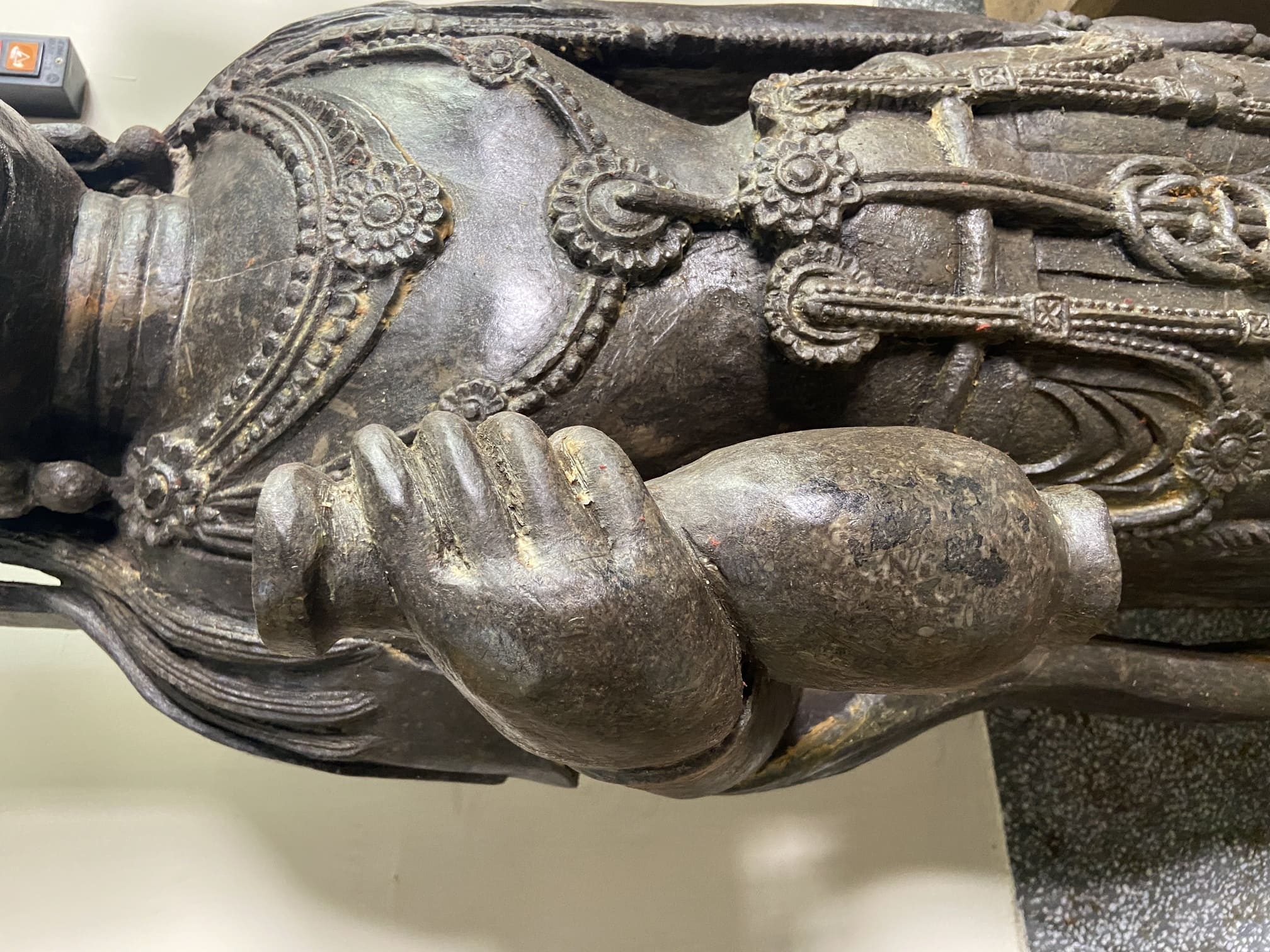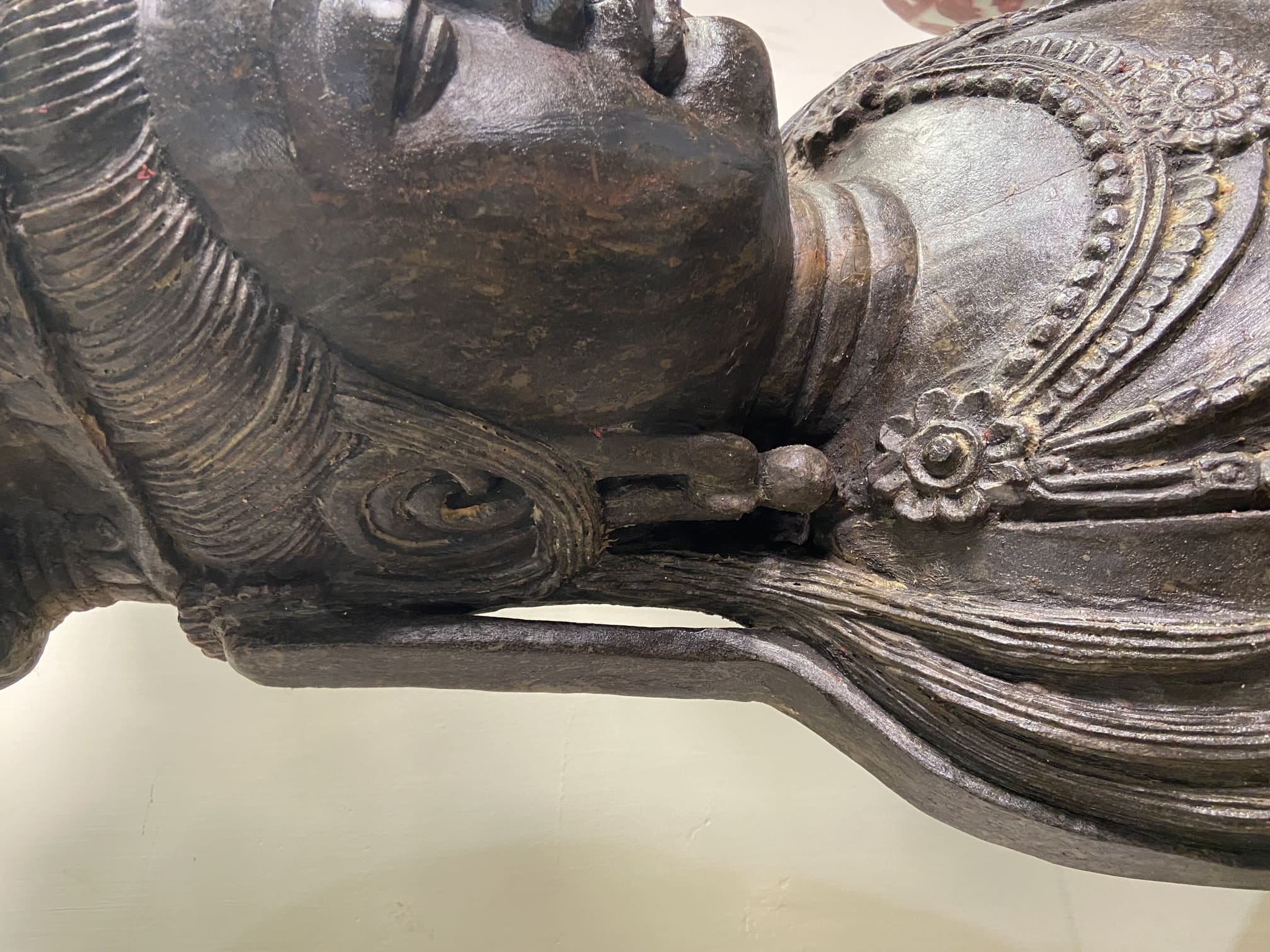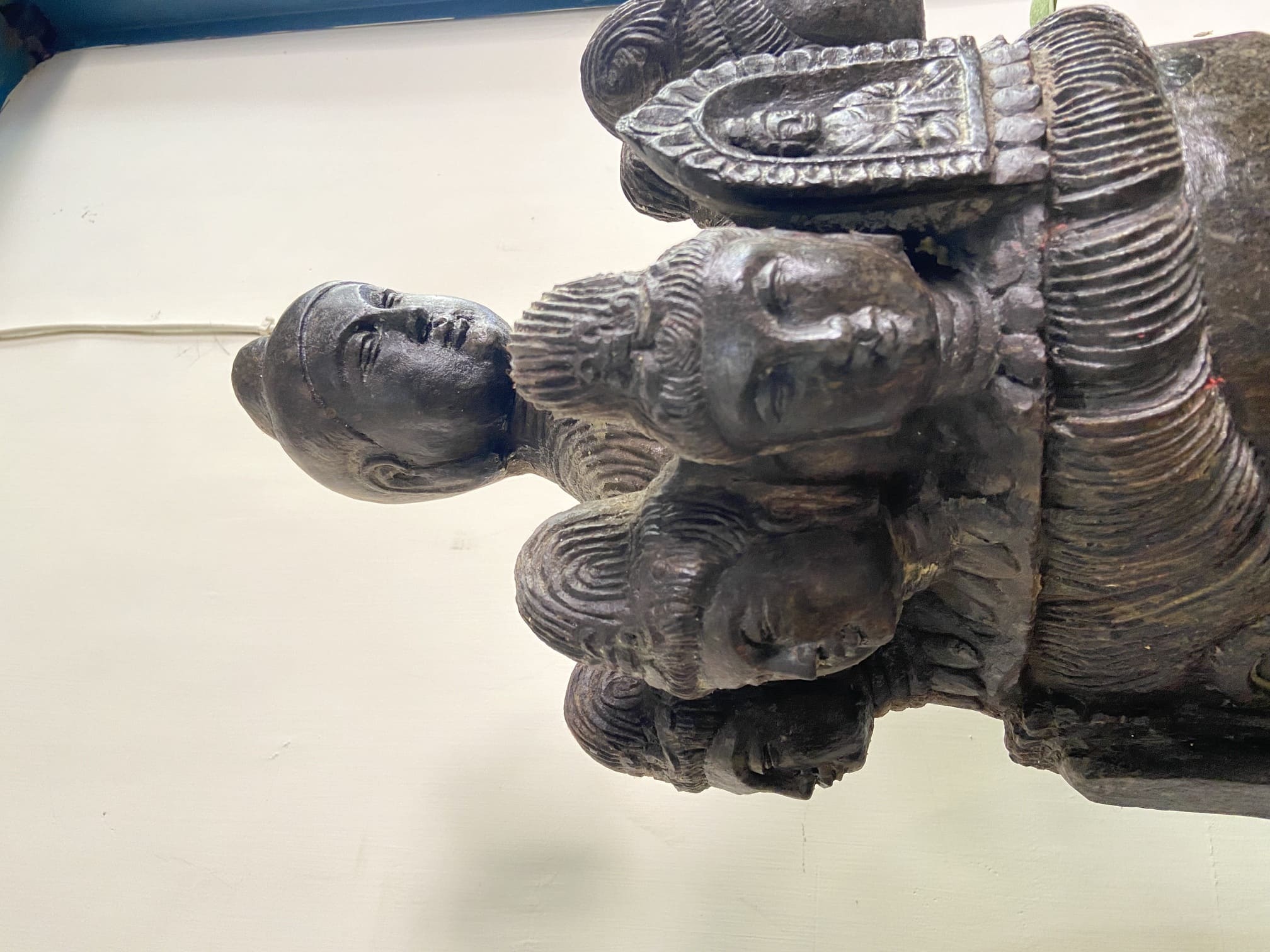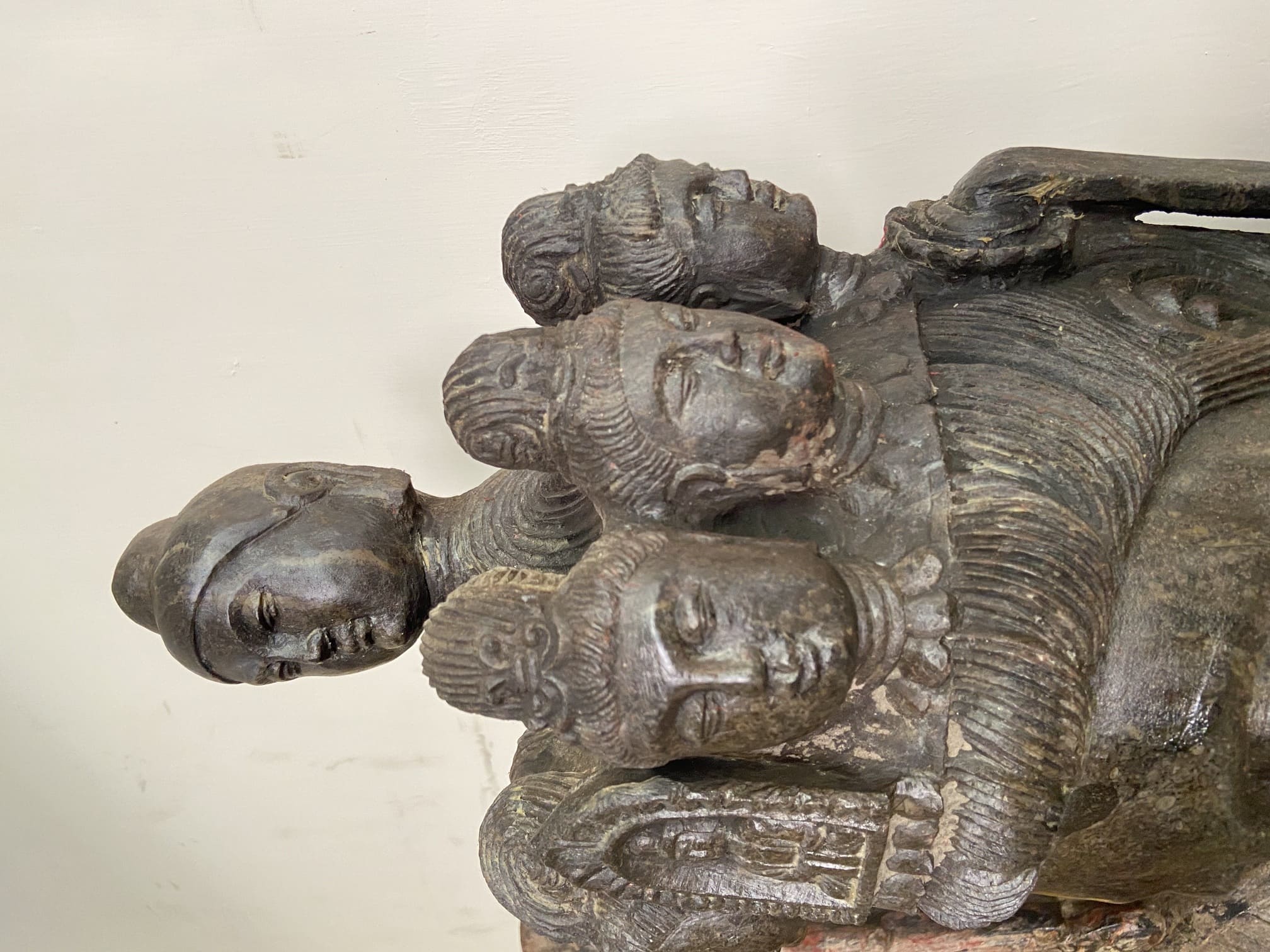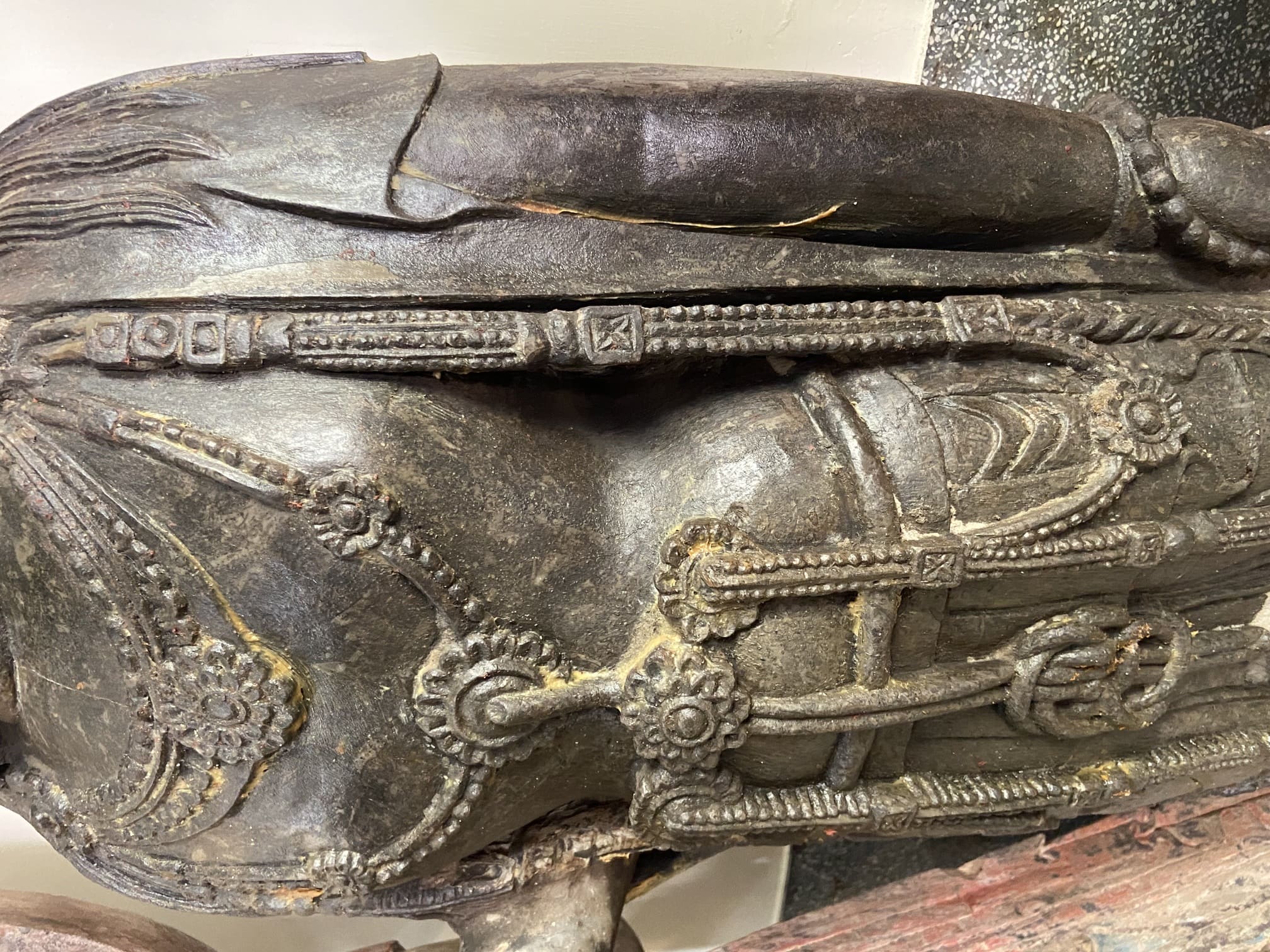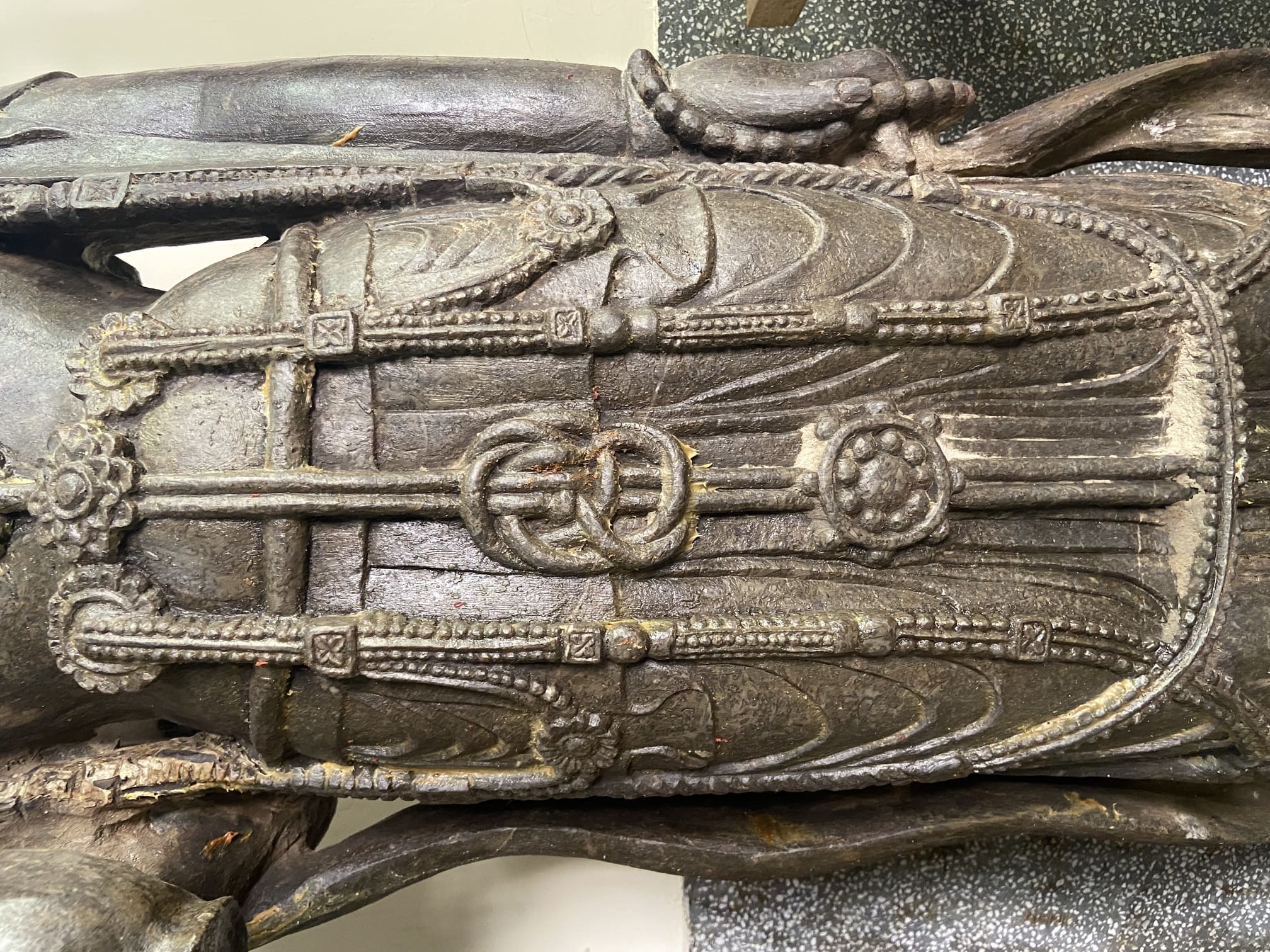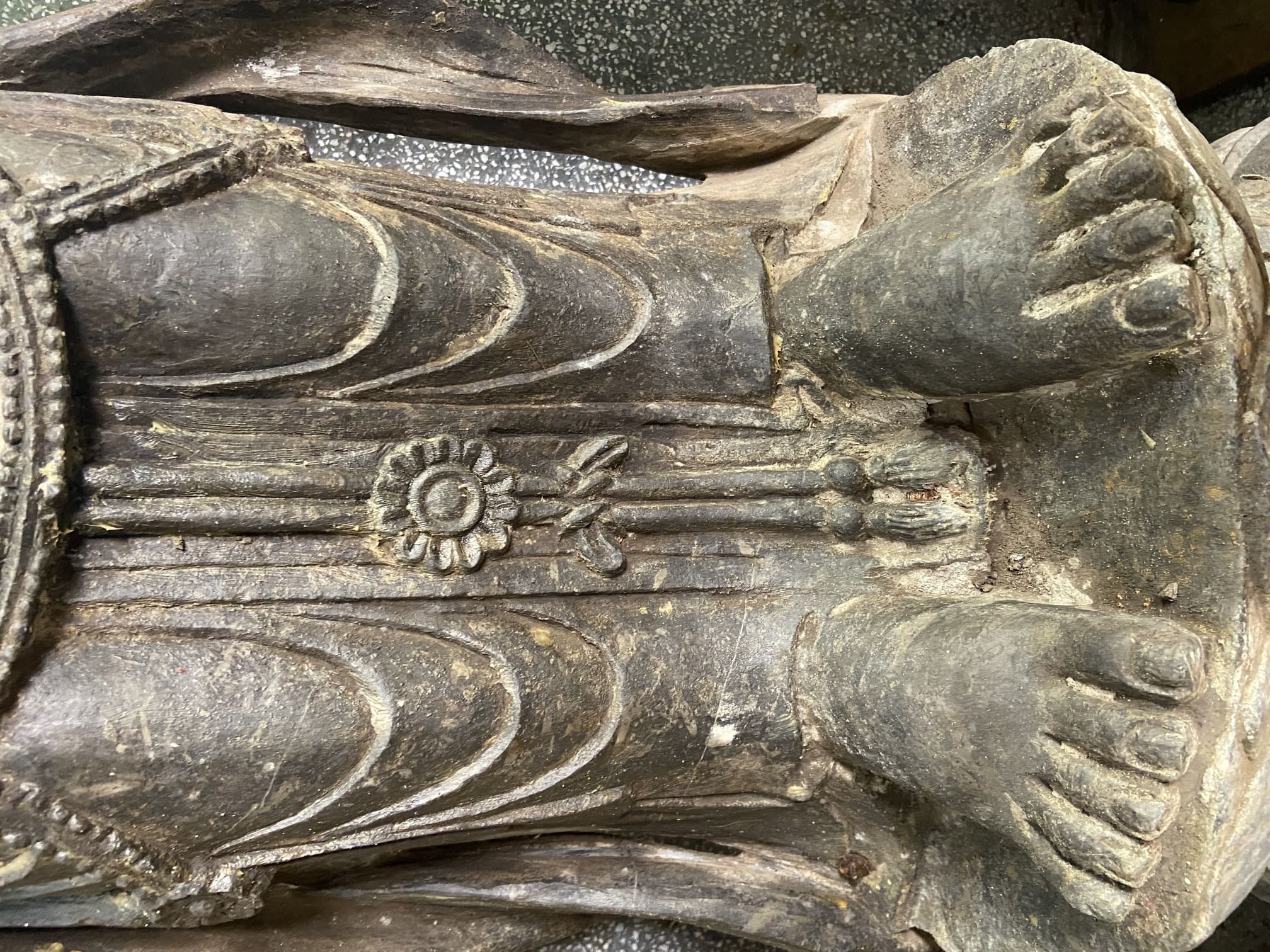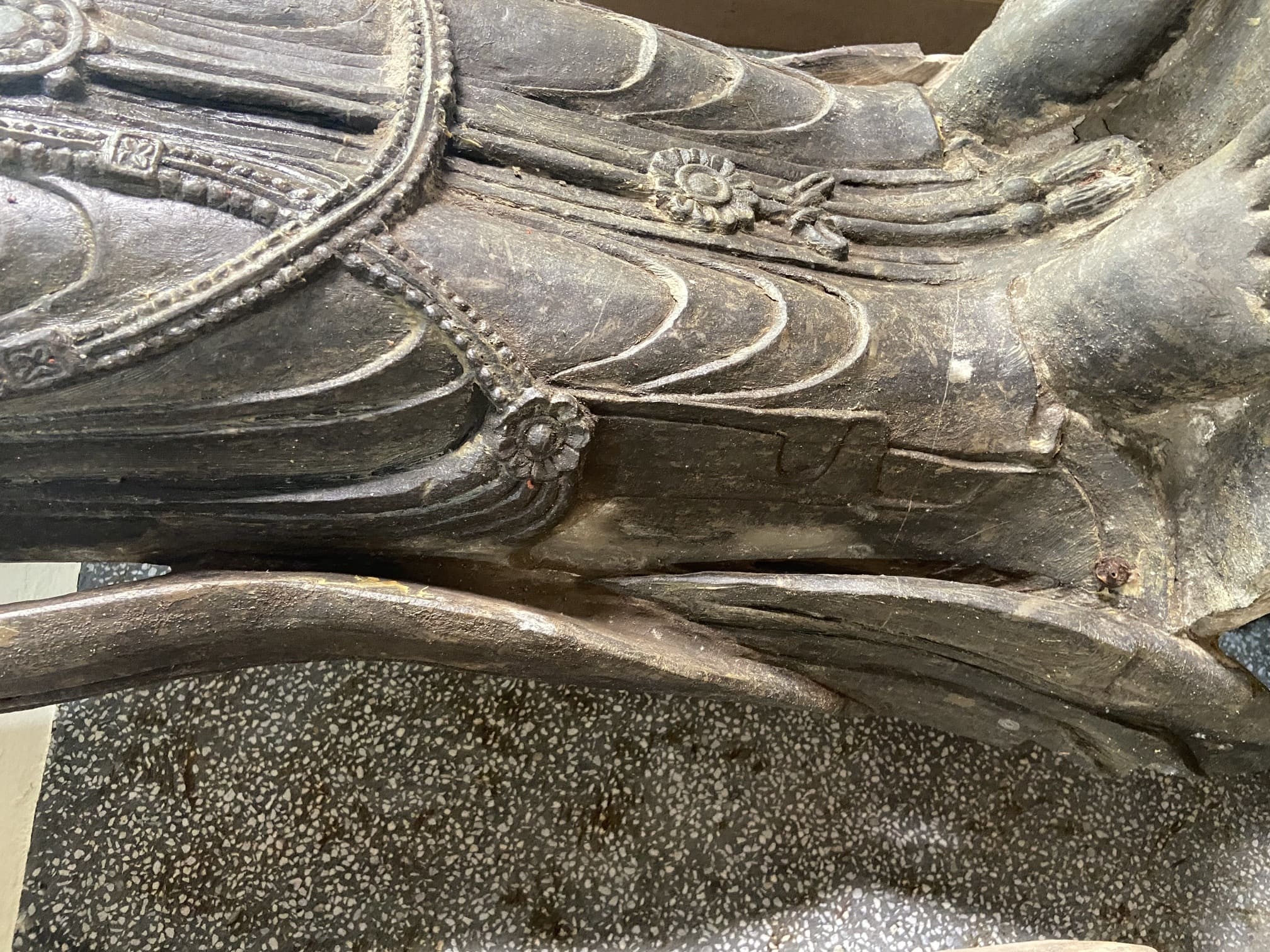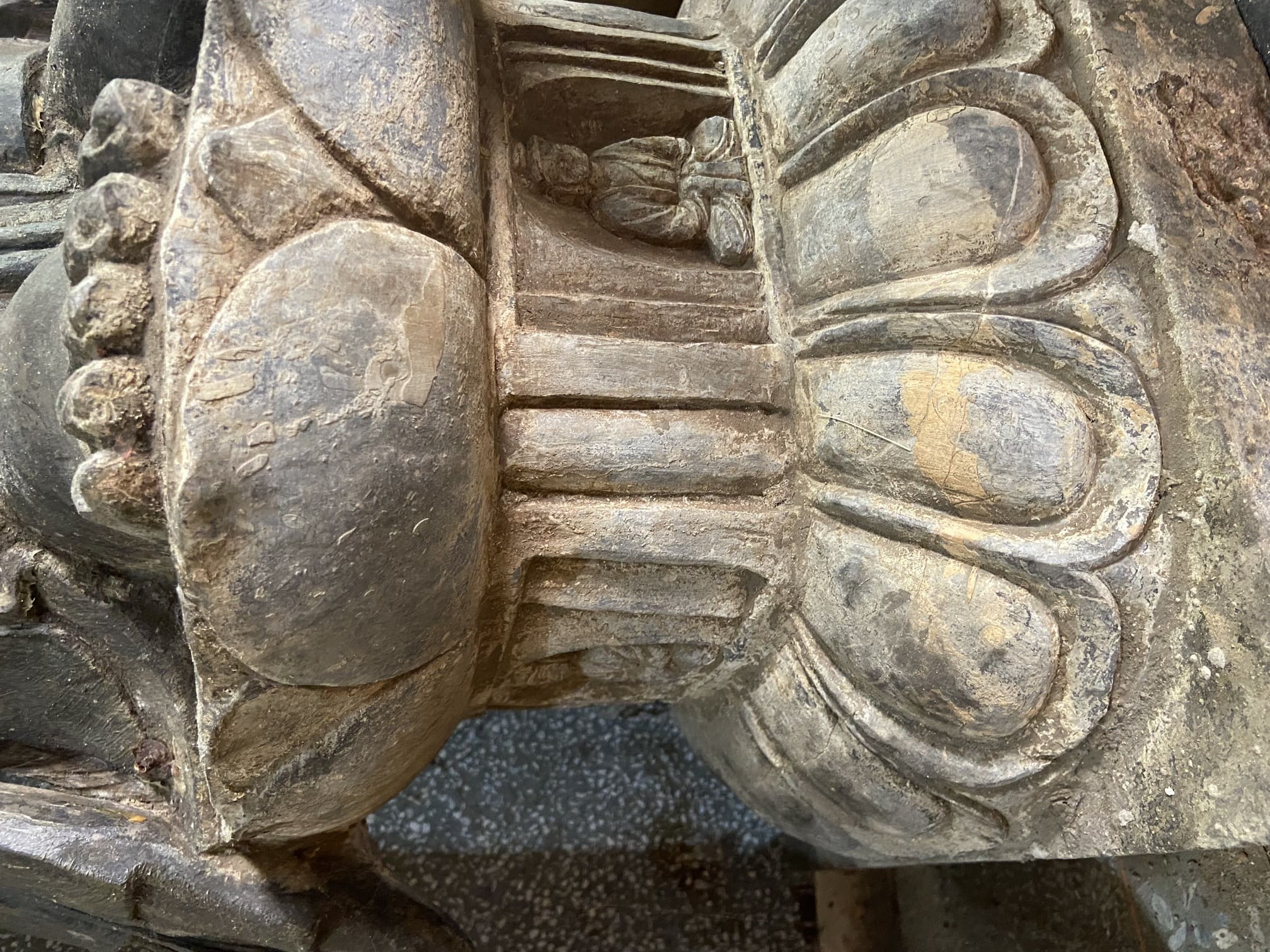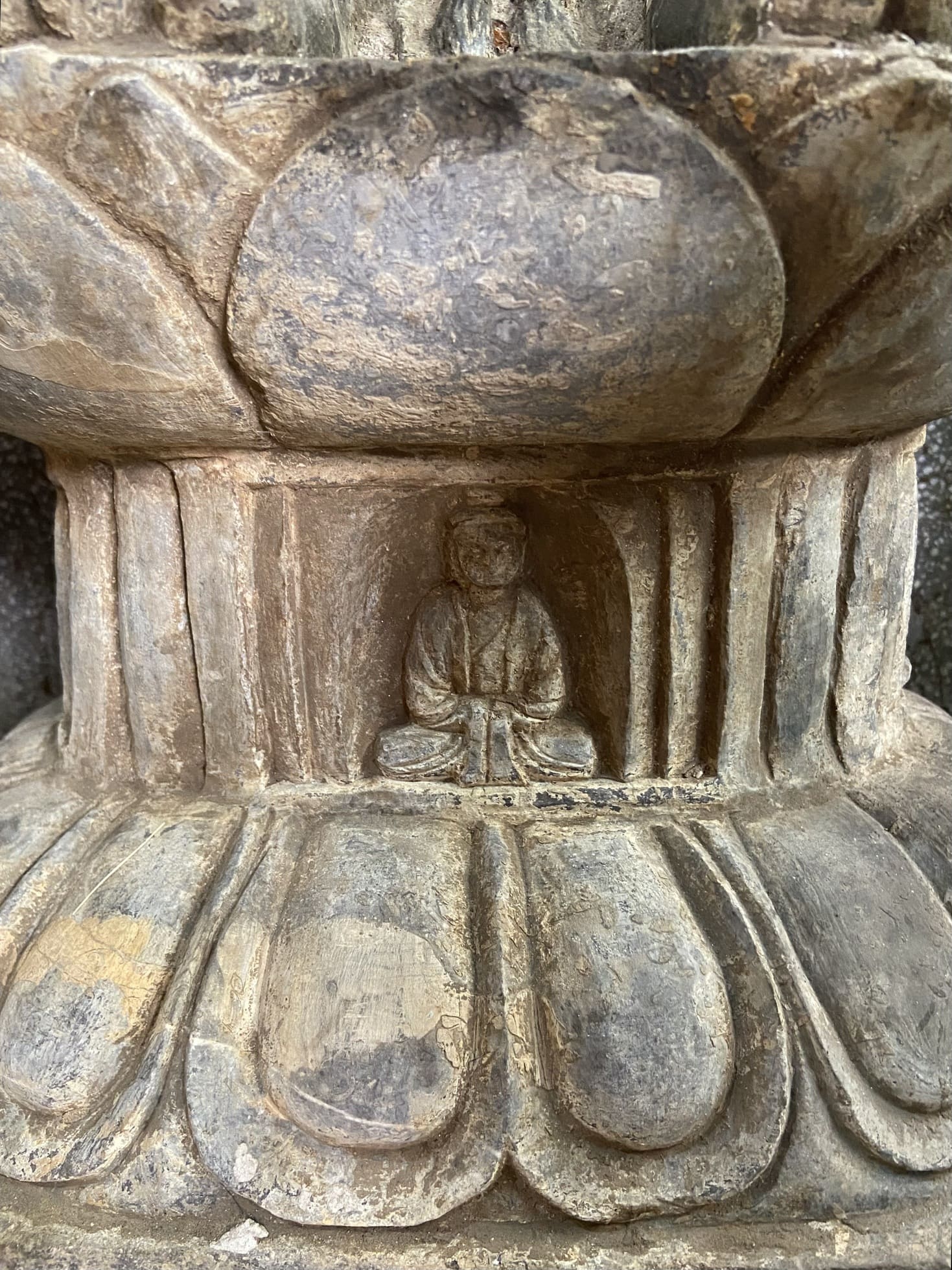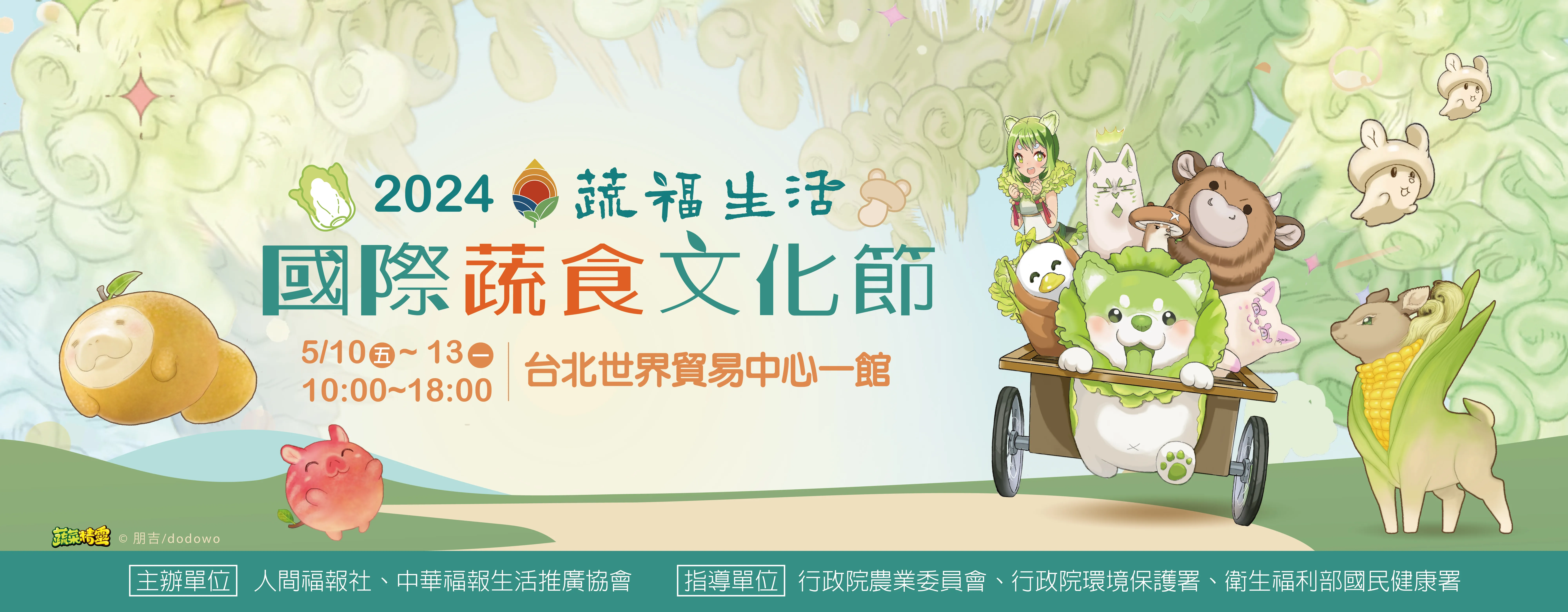
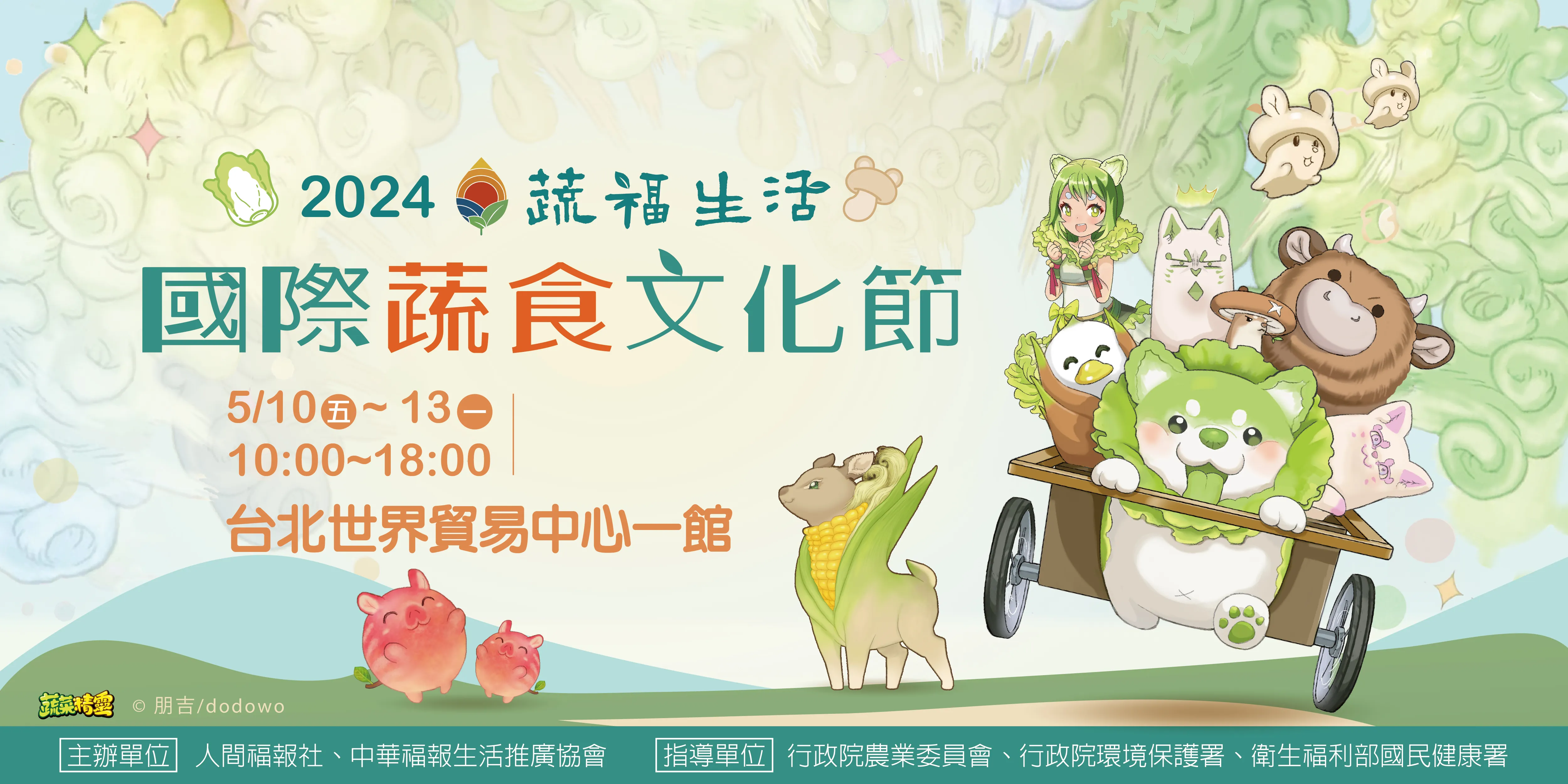

| 時代: | 唐朝時期 (西元618-907) Tang dynasty (AD 618-907) |
| 出土地點: | 傳世品 |
| 尺寸: | 高度:約185公分 Height: about 185 cm 重量:約900公斤 Weight: about 900 kg |
| 質地: | 花崗岩 Granit |
| 數量: | 1 |
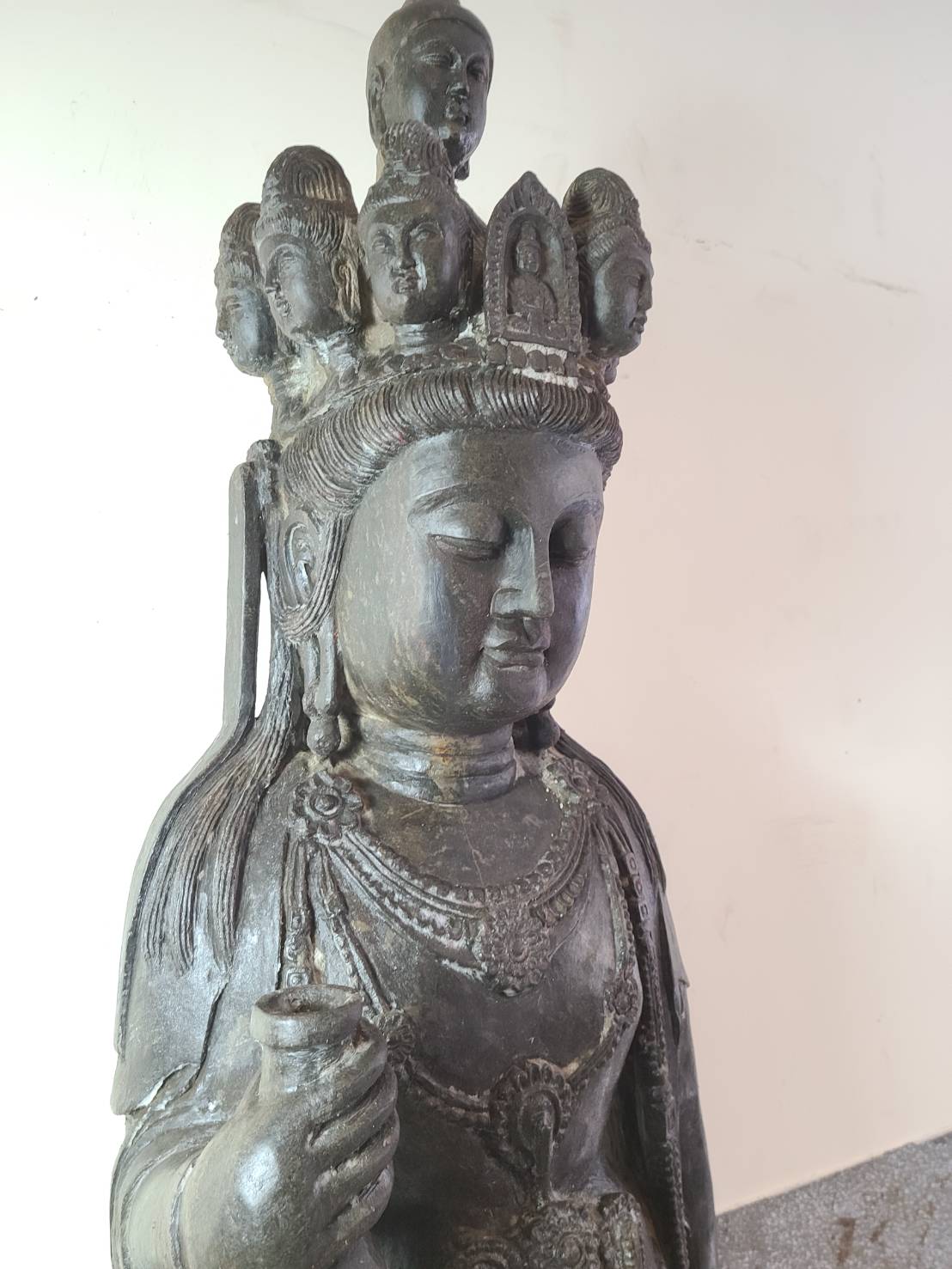
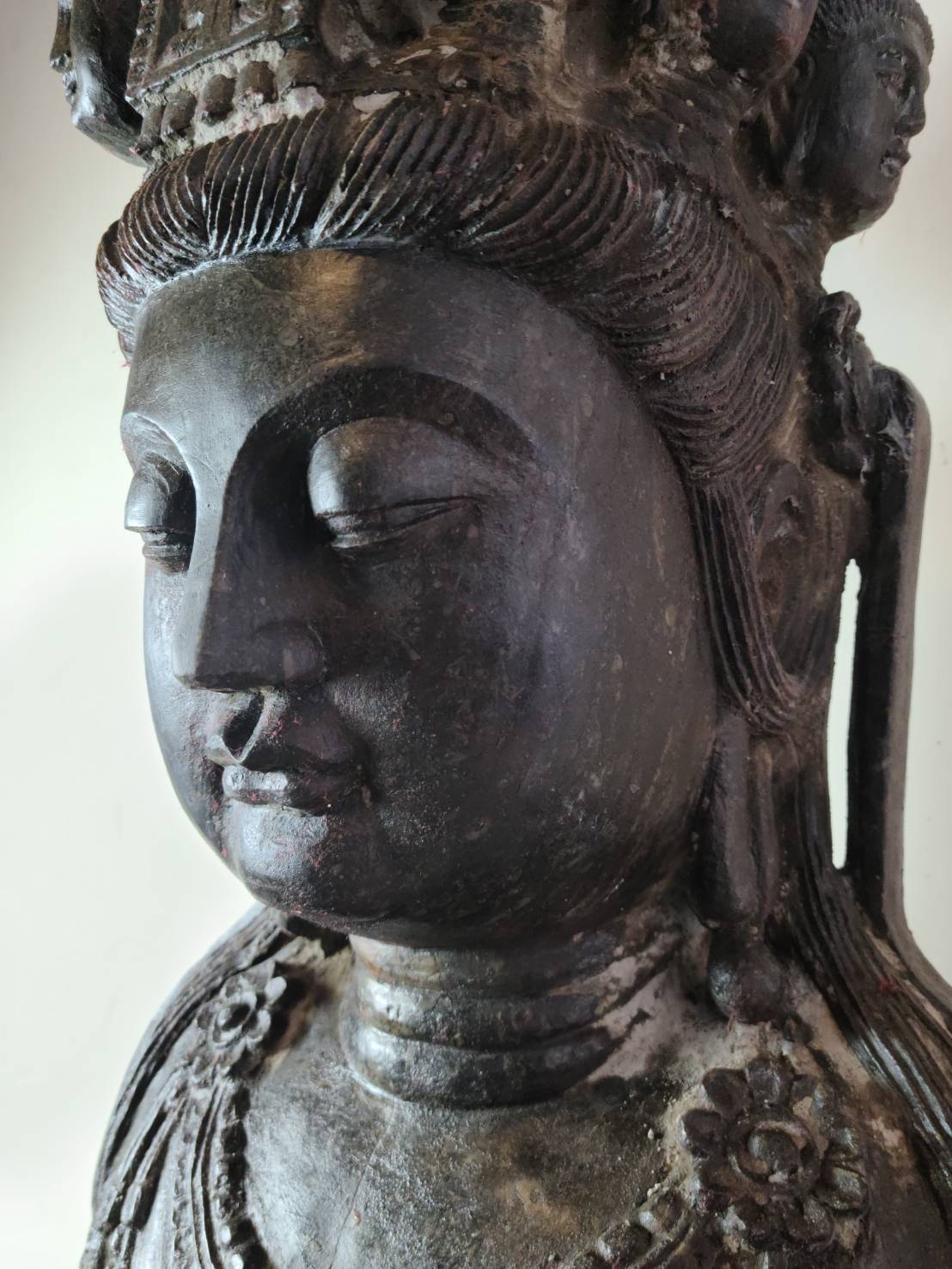
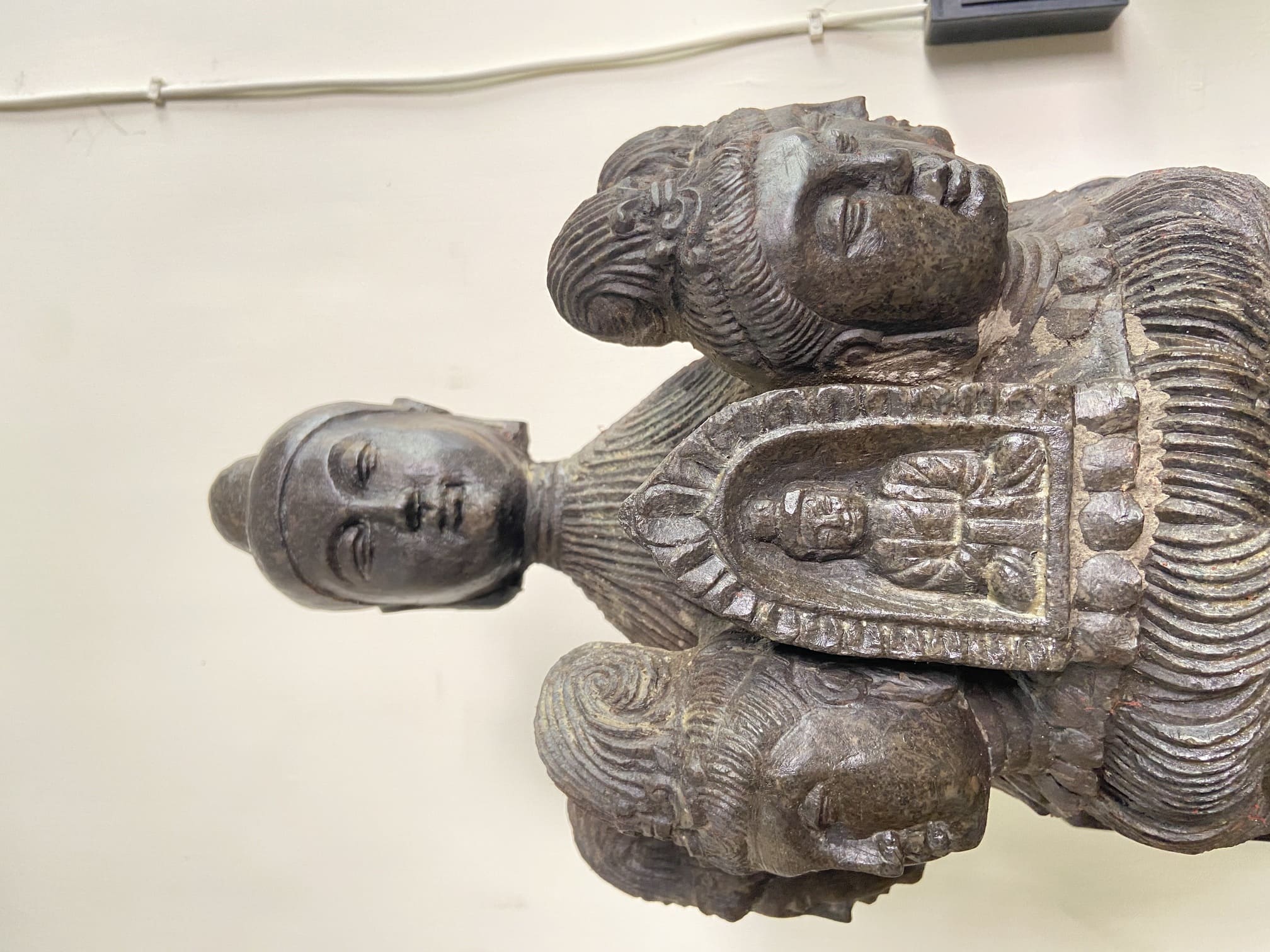
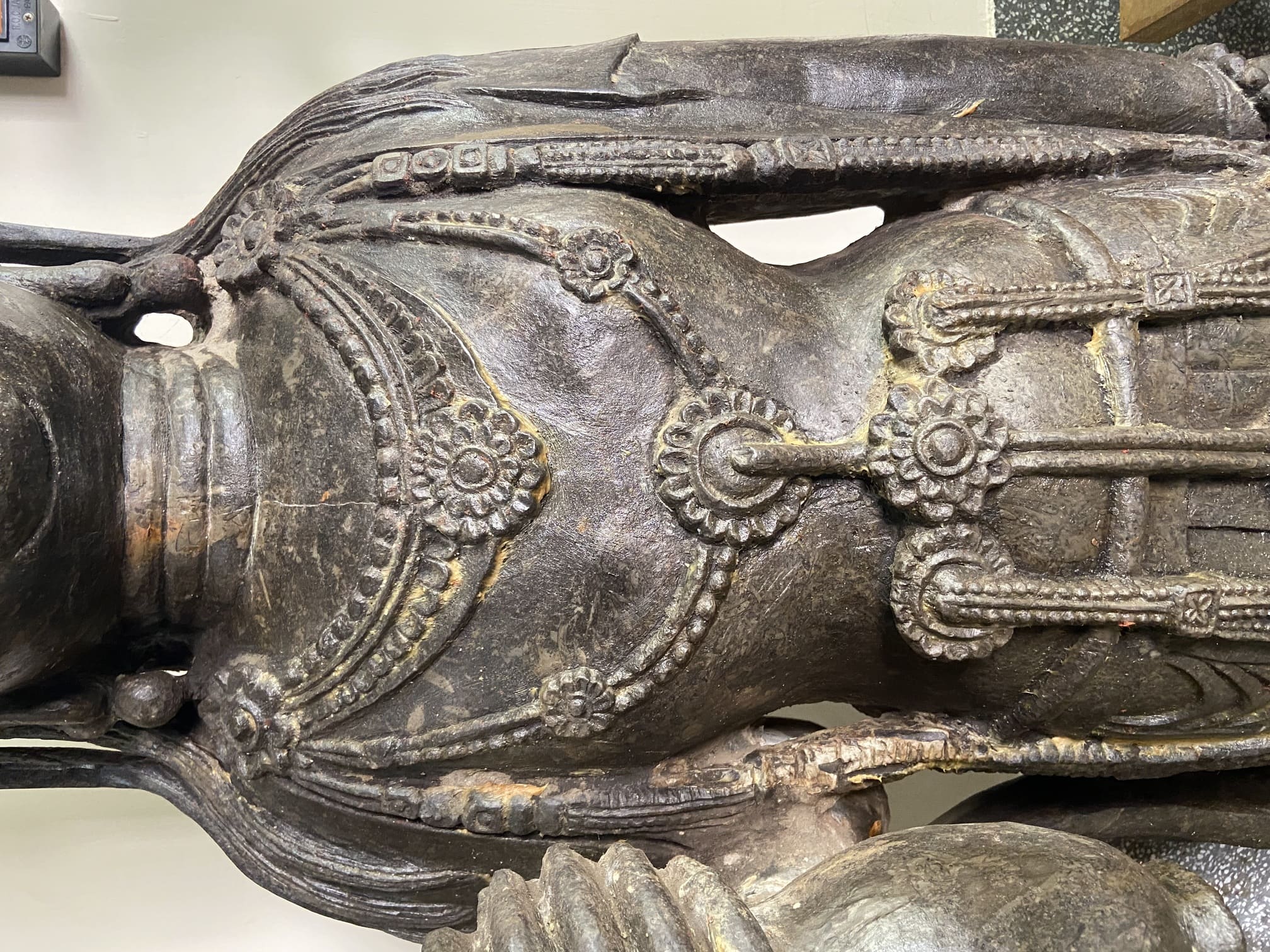
此件為唐朝(近似龍門石窟)七面淨瓶觀音立姿法像,觀音髮冠上有六面觀音,加上法像本身總共有七面觀音,是觀音為教化利益眾生而有的七種化身(七種化身是千手觀音、馬頭觀音、十一面觀音、聖觀音、如意輪觀音、准胝觀音、不空羂索觀音),髮冠最頂端為佛陀首,髮冠中央則為標準唐朝時期的佛陀。面相豐滿,頭部為水波式髮型,肉髻相對于隋代較為高聳,大耳下垂帶耳飾,神情莊重慈祥,是標準唐朝時期菩薩法像臉型和特徵。
身材比例勻稱,體態豐腴、飽滿,袒露的胸肌起伏變化,縮腰使腰身明顯(S腰身),上身袒露至腹,下穿羅裙,腰部有束帶。服飾華美、帔帛環繞,瓔珞精緻,衣服輕薄透體,紋線流暢自然,衣紋流暢,下身衣褶懸搭於座前若臺布。右手持淨瓶,左手自然垂下持佛珠,跣足立於蓮座之上。手持佛珠體現觀音的解脫德,即徹底擺脫無明煩惱和種種束縛,達到大自由大自在的境界,表現「眾生念佛,佛念眾生」同等同體的慈悲精神。
觀音右手的淨瓶中盛裝幫助眾生解脫苦難和痛苦的甘露,多數淨瓶觀音瓶中甘露常遍灑,表示觀音菩薩毫不保留、付出一切普渡眾生,此件觀音淨瓶瓶口則朝上,代表是讓信眾守住家財、事業的豐收瓶。中座為束腰式,中央有佛陀,座底部是蓮瓣底座。
日本法隆寺現有供奉唐朝時期(西元719年)傳入日本的白檀木雕九面觀音立像,與此件之面相、服飾、瓔珞近似,但髮冠、法像姿勢、蓮座有些微不同,可推論該木雕法像應是以此件為基礎而雕刻。因龍門石窟在唐朝時期有大量造像,加以此件法像質地與龍門石窟之石材近似,因此推論此件應為龍門石窟之法像。此件約三十年前流落至台灣,是標準唐朝時期石窟佛像,重要的珍貴文物。
This is a Tang dynasty (similar to that in the Longmen Grottoes) standing 7-faced Guanyin statue. The crown of the Guanyin has six Guanyin faces, which makes 7 faces when the statue’s original face is added. The seven faces symbolize the seven manifestations of the Guanyin used to teach and benefit the people (the seven manifestations are the thousand-arm Guanyin, the horse-necked Guanyin, the 11-faced Guanyin, the sacred Guanyin, the cintamani wheel Guanyin, the extreme purity Guanyin, and the Guanyin with rope). The top of the hair crown is in the shape of the Buddha’s head while the center of the crown is a standard Tang dynasty Buddha figure.
Sporting a wave-like hairstyle, the face of this Guanyin figure is rounded. The bun on this Guanyin is higher than that in the Sui dynasty. This Guanyin statue also has large ears decorated with accessories and a solemn but kind face, which are standard characteristics for Tang dynasty Guanyin statues. Although the body is proportional, the figure is plump in appearance. However, where the muscles show, there are signs of curves. The waist also appears to be very thin and the upper body is bare to the belly. From the belly down, the figure wears a skirt with a belt. The clothing is richly decorated with silk and exquisite wreaths, making the clothing appear light and transparent. The lines of the clothing flow naturally and fall in folds atop the base.
In the Guanyin’s right hand is a vase while the left-hand holds beads in a natural downward position. Standing on a lotus flower base, the beads held by the figure represent Guanyin’s enlightenment and her complete detachment from worries and restraints, leaving her in a state of complete freedom. This also expresses the Guanyin’s merciful spirit and the practice of “chanting the sutras for the benefit of the people.” The vase in Guanyin’s right-hand holds sacred water that helps mortals escape suffering and pain. Generally, most Guanyin with vase are depicted as having used up all of the sacred water, leaving non in the vase. This symbolizes that the Guanyin has given everything with no reservation for the salvation of the people. However, the mouth of the vase held by this Guanyin faces up, which symbolizes that she helps believers retain wealth and prosper. The base is tucked in at the middle with a Buddha in the center while lotus petals decorate the bottom of the base.
Japan’s Horyu Gakumonji has a Tang dynasty (719 AD) wooden 9-faced Guanyin statue that appears similar to this statue, with only slight variation in the crown, posture, and lotus seat. We can theorize that the wooden statue was carved based on this item. The Longmen Grottoes produced a large number of statues during the Tang dynasty and the material of this statue is also similar to the stones used at Longmen Grottoes, therefore, we can inference that this item is a Longmen Grottoes statue. This item was brought to Taiwan and is a standard Grottoes statue from the Tang dynasty. As such, it is a valuable artifact.
